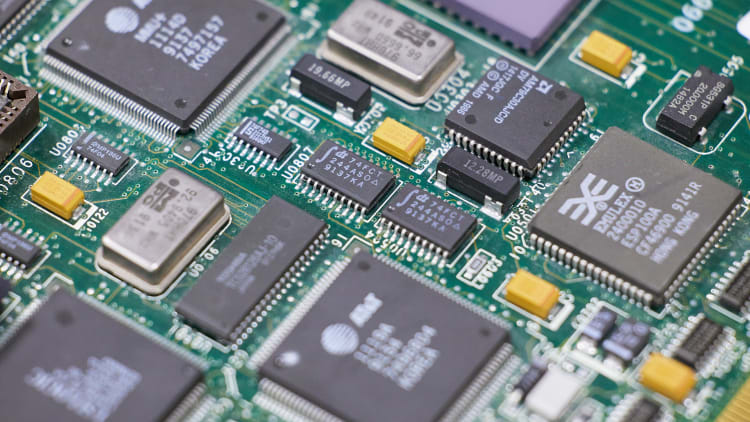"Ultra-short orders and urgent purchases" have become the new market norm, with IC design inventory levels generally rising.
 Ultra-short-term orders and urgent purchases have become the new normal in the market, and IC design inventory levels are generally rising. (Photo by Li Jianliang)
Ultra-short-term orders and urgent purchases have become the new normal in the market, and IC design inventory levels are generally rising. (Photo by Li Jianliang)
In recent weeks, Taiwanese IC design companies have successively released their second quarter 2025 financial reports. From the data, it can be found that the inventory days of most companies may not increase significantly due to the increase in revenue, but the absolute amount has generally increased significantly. It is estimated that "ultra-short orders" and "urgent purchases" may become the new normal.
Industry players generally emphasize that the current inventory status is still quite healthy. It can also be seen from the revenue performance that the inventory amount is not due to orders being lower than expected, but rather because customer demand varies greatly and "temporary additional orders" are too frequent, forcing them to increase their own inventory to meet customer demand.
Some industry insiders even bluntly stated that the days of clear orders in the past may never come back, and most application customers will regard short-term order adjustments as the new normal.
Major manufacturers including MediaTek and Realtek have mentioned inventory issues, but both companies emphasized that the inventory situation is still normal, both at the client and channel ends. The future market conditions will directly reflect demand, rather than additional phenomena caused by inventory fluctuations.
Under such circumstances, there is no need to view chip manufacturers' slightly increased inventory from a negative perspective. To some extent, it is all to meet customer demand. As for the pre-prepared materials, most of them, whether leading large manufacturers or small and medium-sized manufacturers, have a positive view on the current inventory management situation and believe that there is unlikely to be a problem of not being able to sell them.
This situation is closely related to the high frequency of customers placing expedited orders. IC design industry insiders frankly stated that the order estimates given by customers in the second quarter of this year are not far from the normal level of previous years, but urgent orders emerge almost every month.
There are three major directional factors to consider.
First of all, a large part of it is related to factors such as changes in tariff policies and supply chain restructuring.
Second, actual market demand is more difficult to estimate than in the past.
Third, most downstream customers still maintain a low inventory policy, and it is difficult to respond to sudden demand with existing inventory.
The above factors are all related to each other. From the perspective of IC designers, facing such an uncertain market, it is better to prepare more inventory to be more flexible in responding to market changes.
Most IC design companies believe this situation will continue into the second half of the year. In the third quarter alone, some customers initiated rush orders due to tariff changes. Furthermore, these rush orders are even more urgent in the second half of the year than in the first half, suggesting that customers are essentially waiting until the last minute, observing policy or market changes, before initiating rush orders to respond.
It is foreseeable that there will be no significant changes in the three-month order demand given by customers in the current third quarter and the subsequent fourth quarter, but urgent orders may suddenly emerge at any time. Some more optimistic businesses have already taken urgent order estimates into account when estimating revenue performance.
Of course, some industry insiders have also frankly stated that the company itself is not completely optimistic about the subsequent market demand. The basic order estimates given by customers alone have exceeded the scale of the industry insiders' own assessment.
However, the various urgent orders for goods that have continued from the first half of the year to the present have proved that customers' temporary needs do exist. It is better to prepare the goods according to customer requirements than to have no materials to provide when customers place urgent orders.
On the other hand, uncertainty surrounding tariffs and US tech policy remains high and is likely to become a long-term reality. This means customers will undoubtedly continue to respond to these changes with rush orders. Some IC design companies admit that not only are peak and off-season periods less distinct than in the past, but even having more than a quarter's worth of order visibility has become a luxury.
近幾週台系IC設計業者陸續公布2025年第2季財報,從數據中可以發現,多數業者庫存天數或許因為營收攀高,增幅並未太明顯,但絕對金額普遍都有顯著提升,估計「超短單」、「急拉貨」,恐成了新常態。
www.digitimes.com.tw



